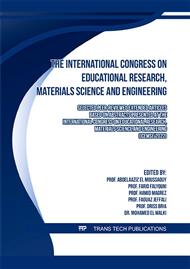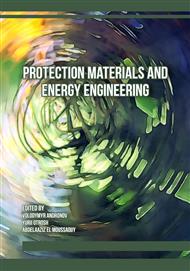p.3
p.17
p.31
p.41
p.55
p.73
p.97
p.111
Comparison between the Performance of Combined Treatment of Waste Water Physic-Chemical & Biological and the Direct Activated Sludge Applicated to Dairy Activity
Abstract:
The main purpose of this study is to investigate the effect of operating conditions on the performance of two methods used for dairy wastewater treatment. First, a treatment that combined both physic-chemical and conventional activated sludge. Second, the conventional activated sludge alone. On one side, the study included the comparison of parameters of each system, and on the other side, it studied the economic impact on the dairy industry the subject of the study. The waste water treatment plant was modified in order to study the differences between the two options and to come up with the different possibilities. The comparison takes into consideration different parameters: temperature, pH, SS, COD. The dairy waste water was used with characterisation of COD: 4000mg/l, Suspended sludge: 425 mg/l, temperature: 27 °C, pH: 7.5. In this study we will see the different conditions to use one or another process. The studies come for many reasons, the most of them was the maintenance of the physic-chemical station. In order to let the system running the industrial decided to try the feeding the biological tank directly and see if it’s going to work. This is what will present this article in two parts; the first one showing the parameters and results of using the both process and the second one will show the parameters and results of using just the biological treatment.
Info:
Periodical:
Pages:
31-39
Citation:
Online since:
August 2023
Authors:
Price:
Сopyright:
© 2023 Trans Tech Publications Ltd. All Rights Reserved
Share:
Citation:




